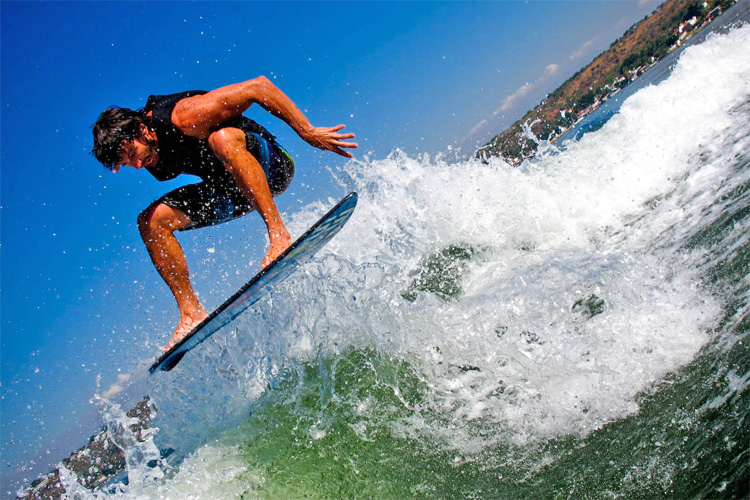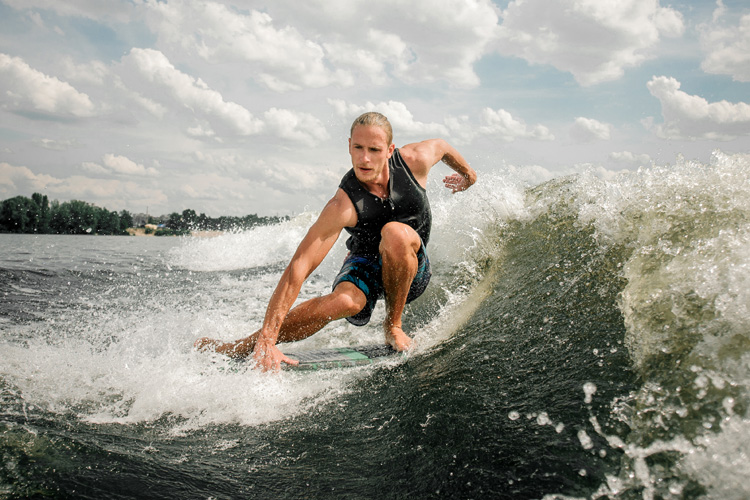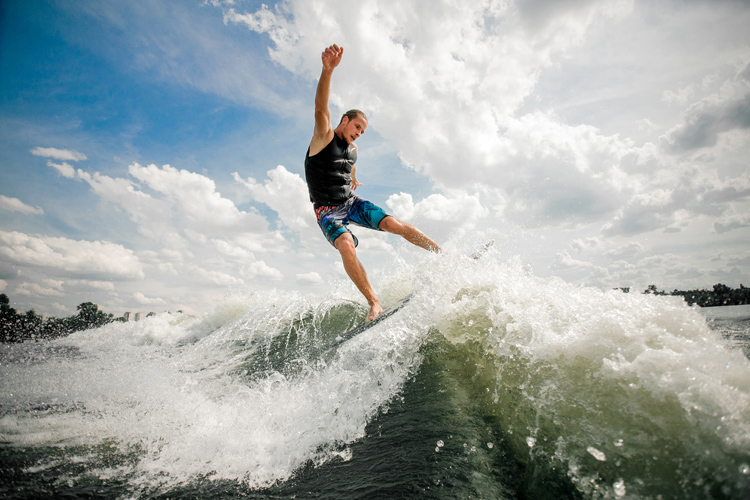Wakesurfing is a sport that blends aspects of wakeboarding and surfing. Its origins date back to the 1960s, and it was initially called "boat surfing."
Wakesurfers take advantage of the wake produced by a boat to ride it more or less indefinitely. The sport involves much less rope time than wakeboarding.
Wakesurfing incorporates some of the key maneuvers found in wakeboarding and the most progressive side of surfing, skimboarding, skateboarding, and even snowboarding.
Wakesurfers tend to ride boards that are more similar to surfboards than wakeboards.
After all, the goal is to ride a small wave and surf it like an ocean roller.
So, you'll use beginner, surf, and skim-style wakesurfing boards. Each one serves its own purpose.

Wakesurfing Boats and Configurations
Boats used in wakeboarding may be slightly adapted and fine-tuned to produce wakes that could be surfed.
Unlike classic surfers, wakesurfers will always need an artificially generated wave. That is why wakesurfing is a towed water sport.
Wakesurfers are pulled by wakeboard boats equipped with subtle yet highly useful gear and technological elements that help create bigger and better wakes.
Lead and concrete weights can be added to different sections of the boat's ballast to weigh it down and produce more rideable surfing waves.
As a general rule of thumb, the deeper the wake boat is in the water, the bigger the wave will be overall. But it needs to be in the right place.
Boat owners should place more weight on the side on which the rider is riding to obtain a clean open wave face.
However, modern wakeboarding boats allow drivers to customize the wave they want electronically and adjust the wake's settings to the rider's style and experience level.
Wakesurfers also need to adjust the length of the rope they need to get into the wave. Ideally, you should set it to where the lip of the wake is curling.
A long rope will get you too far back, behind the wave's sweet spot; a short rope will get you too close to the boat.
If you're already an intermediate surfer or wakeboard, you'll find it relatively easy to get into wakesurfing.
If you're not, don't worry. It will only take a couple of hours of practice to start enjoying the pleasures of surfing these nearly endless waves.
Wakesurfing 101
Let's learn how to surf behind a motorboat:
- Put on a Coast Guard Approved (CGA) life jacket;
- Get the board and the rope and jump into the water;
- Turn the board perpendicular to the boat;
- Put your heels on the board near the rail that is close to you;
- Relax and sit back;
- Give a thumbs up to the boat driver;
- As you get up, try to stay outside of the wake;
- Get comfortable with the ride and slowly drift into the wake;
- Hold on to the rope and get acquainted with the wake's dynamics and sweet spot;
- Once you feel confident, throw the rope into the boat and cruise by yourself;

Now that you're wakesurfing, it's time to explore the wave:
- Start going up and down the wake;
- Try a few snaps off the top of the wake;
- To generate speed, pump the board;
- To get airborne or perform a 360, get to the back of the wake, generate speed, and hit the highest part of the wave;
There are several organizations running wakesurfing competitions.
The World Wake Association (WWA), the Competitive Wake Surf Association (CWSA), and the International Waterski & Wakeboard Federation (IWWF) set up the majority of wakesurfing events.
Get inspired and improve your riding level.
Watch pioneers and legends of wakesurfing like Bri Chmel, Duncan Lee, Drew Danielo, Jeff Paige, Jerry Price, Mark Sher, Rick Lee, and Tim Lopes take the sport to its limit.
